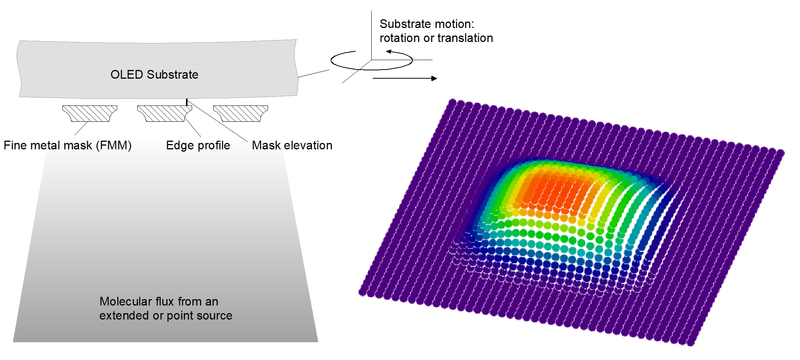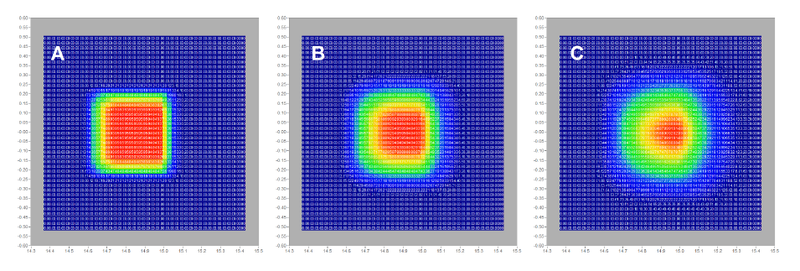NEWSLETTER January 2024
Application of V-Grade 5S: OLED Manufacturing
Organic light-emitting diodes (OLED) display devices have greatly expanded the needs for physical vapor deposition. In a majority of OLED panels, the light-emitting-material arrays are directly formed in vacuum deposition processes with the help of fine metal masks, or FMM.
Interplays of the many elements associated with the deposition processes pose significant and, sometimes, formidable challenges in engineering. These elements include FMM edge profile, FMM elevation from the substrate, curvature of substrates, conformity of FMM to a substrate, choice of vapor source, location of vapor source, and manners of substrate motion.
As with many thin-film manufacturing processes, a cost-effective approach to OLED engineering is a workflow that incorporates numerical modeling.
Tin Model LLC is proud to introduce V-Grade 5S Pro for manufacturers of OLED products. V-Grade 5S series modeling software coalesces a set of essential tools for numerical modeling of vacuum deposition processes in OLED manufacturing.
-- your partner in PVD engineering & innovation
Copyright © 2024 Tin Model LLC. All rights reserved.
Shown above are three thickness maps of a material deposited through a micrometer-size perforation of an FMM, simulated with a V-Grade 5S program. These three cases are different in the elevation of the FMM from the substrate: in A the elevation is 0.25W, W being the width of the square perforation; B and C has an elevation of 0.5W and 0.75W, respectively. The FMM elevation is one among many physical parameters that can affect the final outcome. V-Grade 5S is ideally suited for studying a multitude of physical parameters and tradeoffs among them. To learn more details of this study please visit a Tin Model webpage.


